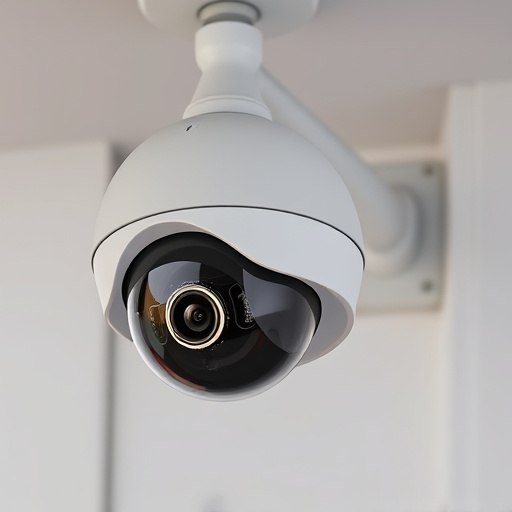A surge in demand for fake surveillance equipment caters to both security needs and testing/bypassing systems. The most convincing dummy camera types mimic genuine equipment with LED indicators and moving parts, offering cost-effective deterrents for homes, businesses, and public spaces. These cameras are made from high-quality plastics, resins, and weatherproof materials, enhancing realism through intricate molding and functional components. Strategic placement, regular maintenance, and adjustments ensure their effectiveness as both practical tools and deception devices.
Surveillance technology has advanced dramatically, but so have countermeasures. Realistic fake surveillance equipment, or dummy cameras, are now a popular choice for businesses seeking to deter theft and vandalism without actual cameras. This article explores the growing market for these devices, delving into design elements that make them virtually indistinguishable from real cameras, material choices for maximum deception, and strategic placement tips for optimal effect. Discover the most convincing dummy camera type to keep your property safe.
- Understanding the Market for Fake Surveillance Equipment
- Design Elements of Realistic Dummy Cameras
- Choosing the Right Materials for Convincing Imitations
- Placement and Maintenance Tips for Effective Deception
Understanding the Market for Fake Surveillance Equipment
The market for fake surveillance equipment has seen a surge in demand, driven by both genuine security concerns and mischievous individuals seeking to test or bypass systems. Among the most convincing dummy camera types, the realistic looking “fake security cameras” stand out. These replicas mimic the appearance and behavior of real security cameras, complete with LED indicators and moving parts, making them nearly indistinguishable from authentic surveillance equipment.
The allure of these dummy cameras lies in their versatility and effectiveness as deterrents. They can be strategically placed in various settings—from homes and businesses to public spaces—to deter potential intruders without the hefty cost and complex installation of actual security systems. As technology advances, these fakes become increasingly sophisticated, providing peace of mind while keeping false alarm calls and unwarranted intrusions at bay.
Design Elements of Realistic Dummy Cameras
The design of realistic dummy cameras, often referred to as the most convincing type, incorporates several key elements to mimic genuine surveillance equipment closely. These include intricate details in the camera body, such as intricate circuit board patterns, carefully crafted lenses with visible reflections and distortions, and even subtle signs of wear and tear.
Manufacturers pay close attention to materials used, opting for plastics that replicate the look and feel of real metal or glass. Lighting effects are also crucial; strategically placed LEDs can simulate the glow of a functional camera, enhancing the overall realism. Additionally, combining these physical attributes with realistic software rendering allows for dynamic scenes, making the dummy cameras even more convincing, especially when integrated into a scene’s environment.
Choosing the Right Materials for Convincing Imitations
When creating realistic fake surveillance equipment, such as dummy cameras, selecting the right materials is key to achieving a convincing imitation. High-quality plastics and resins offer an excellent base for replicating the look and feel of real hardware, providing durability and versatility in design. For outdoor use, weatherproof options ensure longevity despite exposure to varying elements.
The most convincing dummy camera type often combines realistic details with functional features. This might include intricately molded casings that mimic the texture and color of metal or plastic housing, along with functional components like LED indicators and adjustable mounts. Using materials that closely resemble authentic surveillance equipment not only enhances visual appeal but also adds to the overall realism, making them ideal for both practical use and as deterrents in various settings.
Placement and Maintenance Tips for Effective Deception
For maximum deception, strategically placing realistic-looking fake surveillance equipment is key. Opt for areas that mimic real camera locations—roofs, walls, and corners—to create a convincing network. Consider factors like line of sight and angle to ensure the dummy cameras appear functional from various perspectives.
Regular maintenance is equally vital. Periodically clean the equipment to maintain its realism, replacing parts as needed. Simple adjustments like reorienting the camera or swapping out batteries can significantly extend their lifespan and keep them appearing active, contributing to a more effective overall deception strategy.
The market for realistic fake surveillance equipment offers a unique blend of technology and deception, catering to both professional security needs and creative illusions. By understanding the design elements, materials, and strategic placement, individuals can create highly convincing dummy cameras that serve as effective deterrents or intriguing artistic installations. Whether for enhancing physical security or crafting immersive environments, mastering the art of realistic fake surveillance equipment allows for innovative solutions tailored to specific requirements, ensuring peace of mind and a touch of intrigue. As for the most convincing dummy camera type, it lies in the intricate attention to detail, from advanced materials to strategic positioning, ultimately providing an authentic simulacrum that tricks even the keenest observer.
